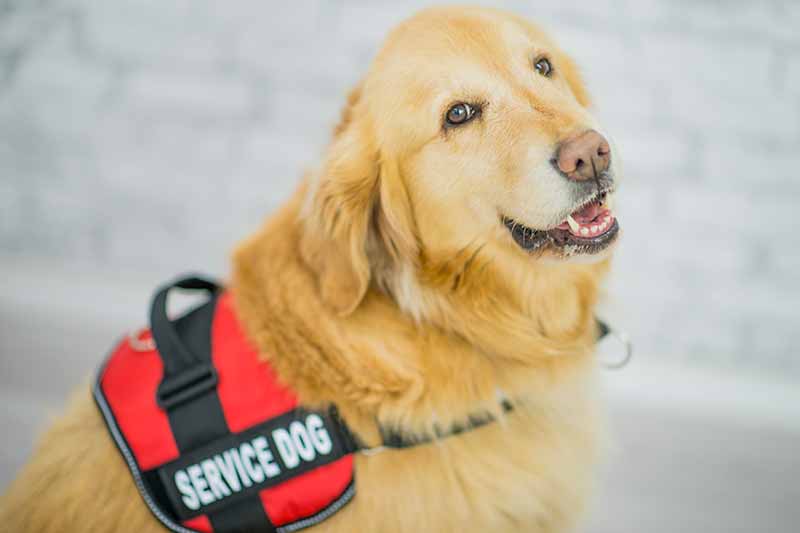 Service animals guide, listen, balance, and love. The services they provide increase independence, freedom, peace of mind, and friendship for their handlers. Some service animals help those with physical disabilities, such as those in a wheelchair. But did you know that service dogs also help people with disabilities that aren’t immediately apparent, such as Post Traumatic Stress Disorder (PTSD)?
Service animals guide, listen, balance, and love. The services they provide increase independence, freedom, peace of mind, and friendship for their handlers. Some service animals help those with physical disabilities, such as those in a wheelchair. But did you know that service dogs also help people with disabilities that aren’t immediately apparent, such as Post Traumatic Stress Disorder (PTSD)?
National Service Dog Month is all about honoring these hard working animals and the handlers they serve. It’s also about helping the public to understand what service animals are, what they do, and why they are so important to the people who need them. Although it’s easy to appreciate the help a service dog offers someone in a wheelchair, studies show that people with invisible disabilities experience more discrimination that those whose disability is not obvious.
What is a Service Animal?
Service dogs are defined and protected under the Americans With Disabilities Act (ADA). Under the ADA, a service dog is one “that is individually trained to do work or perform tasks for people with disabilities”. The explanation goes on to expand on the definition that service dogs receive extensive and specific training, and are allowed wherever the public is allowed, in order to allow their handlers to fully participate in activities of living, work, and study.
Besides helping those with physical disabilities, service dogs can be trained to help those with mental illness, diabetes, seizures, and other invisible disabilities. Service dogs can provide assistance to these individuals by:
- Waking someone with PTSD from a nightmare or night terror
- Reminding the handler to take prescribed medication
- Predicting a diabetic episode by alerting the handler to drops in blood sugar
- Predicting and responding to an oncoming seizure
- Seeking help in the event of an emergency
- Turning on lights and performing other household tasks
- Providing a calm, comforting presence in a physiatric episode
Service Dog Stereotypes
Although those with physical disabilities experience discrimination (nearly half), those with invisible disabilities experience significantly more. Discrimination can take the following forms:
- Being asked if their service dog is a “real” service dog
- Being asked for documentation or proof that the service dog is “real”
- Being asked to leave an establishment or being harrassed
- Being asked to prove they have a disability
The ADA clearly states that service dogs are allowed in public areas, and that they do not require documentation, the service animal stigma that those with disabilities face can cause significant mental distress. Handlers may even struggle with the decision to have a service dog at all.
Public education is the best way to combat service dog stereotypes. The more we can raise awareness about service animals, the better we can all support those with all types of disabilities. If you have questions contact your team at Schertz Animal Hospital.
Recent Posts
About Us
We know that choosing the right veterinarian for your pet (and you) can be a challenge. Yet, with our stress-free handling, our long-term, experienced staff, and a state-of-the-art facility, we make the decision an easy one!
